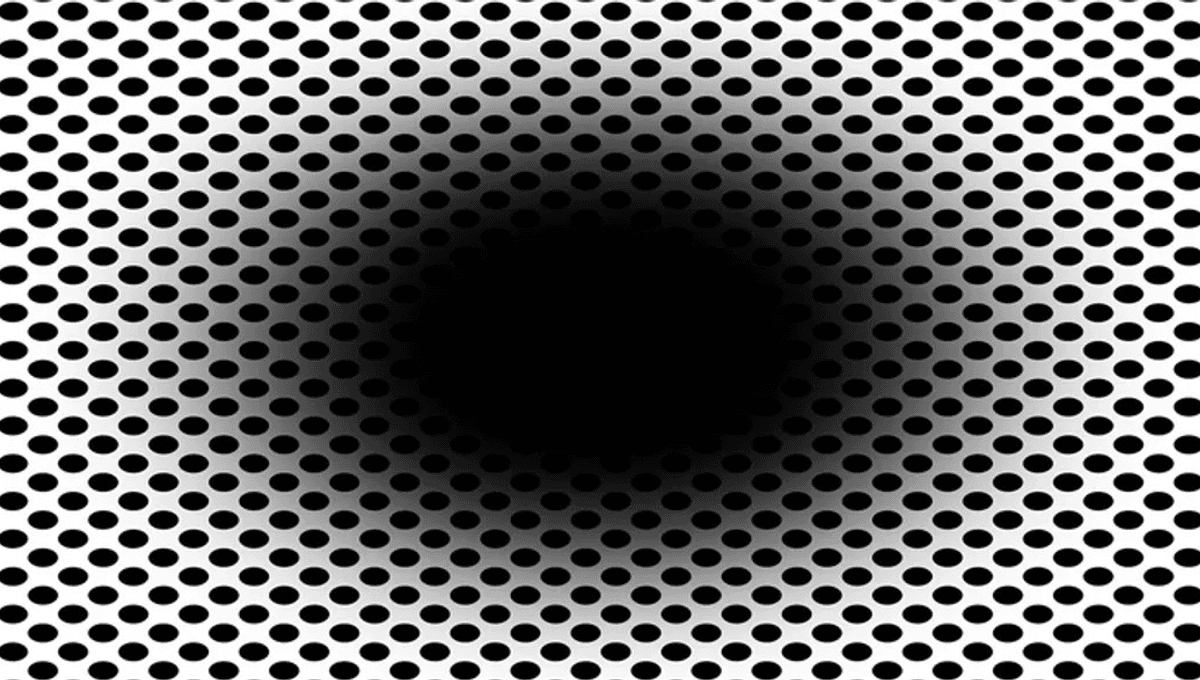
Psychologists are studying an optical illusion so powerful it can even fool the brain’s automatic visual reflexes. Strangely, only about 80 percent of people seem to experience the full effect, and researchers still don’t know why.
The rest of this article is behind a paywall. Please sign in or subscribe to access the full content.
The optical illusion consists of a white background with black dots, at the center of which is a hazy black hole. If you gaze deeply at the black splodge, there’s a chance you’ll perceive the shape to expand.
The researchers from the University of Oslo in Norway found that the “expanding hole” illusion is so good at deceiving our brain that it prompts many people’s pupils to dilate to let in more light, just as would happen if we were really moving into a dark area.
In contrast, when the “hole” was colored instead of black, these patterns constricted the pupils, as if the eye was adapting to brighter light.
“The ‘expanding hole’ is a highly dynamic illusion: The circular smear or shadow gradient of the central black hole evokes a marked impression of optic flow, as if the observer were heading forward into a hole or tunnel,” Dr Bruno Laeng, a professor at the Department of Psychology of the University of Oslo and the study’s first author, said in a statement.
As part of their study, the team showed the “expanding hole” image to 50 people with normal vision and asked them to rate how strongly they perceived the illusion. Meanwhile, the researchers measured their eye movements, as well as the unconscious constrictions and dilations of their pupils.
The researchers aren’t sure why, but not all the participants were able to perceive the illusion. Around 14 percent of the participants didn’t perceive any illusory expansion when the hole was black, while 20 percent didn’t know if the hole was in color.
Furthermore, the stronger individuals rated the intensity of the illusion; the more their pupil diameter tended to change. Those who didn’t perceive the illusion didn’t experience any pupil change.
The study, the researchers say, actually shed some light on how the brain and eyes respond to visual stimulation. It suggests that the dilation and constriction of our pupils is not simply guided by real changes in our physical environment, but also our own imagined perception of our surroundings.
“Our results show that pupils’ dilation or contraction reflex is not a closed-loop mechanism, like a photocell opening a door, impervious to any other information than the actual amount of light stimulating the photoreceptor. Rather, the eye adjusts to perceived and even imagined light, not simply to physical energy. Future studies could reveal other types of physiological or bodily changes that can ‘throw light’ onto how illusions work,” concluded Laeng.
The study was published in the journal Frontiers in Human Neuroscience.
Source Link: Just 80 Percent Of People Can Perceive This Optical Illusion And No One Knows Why